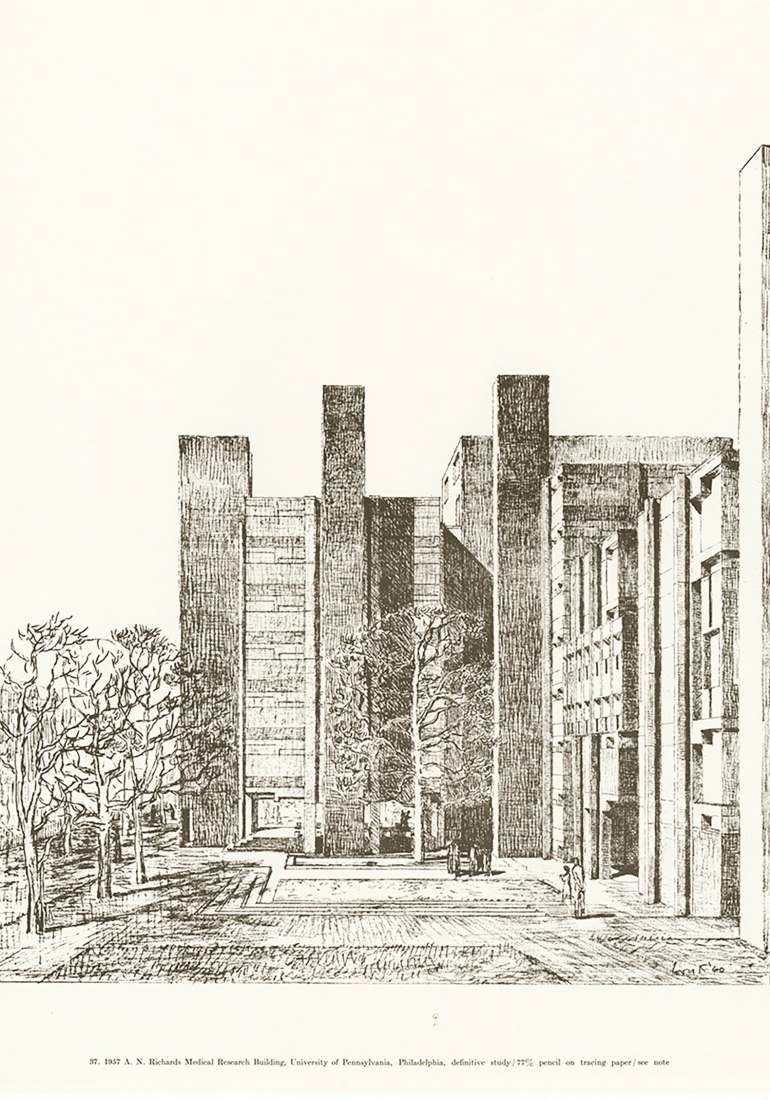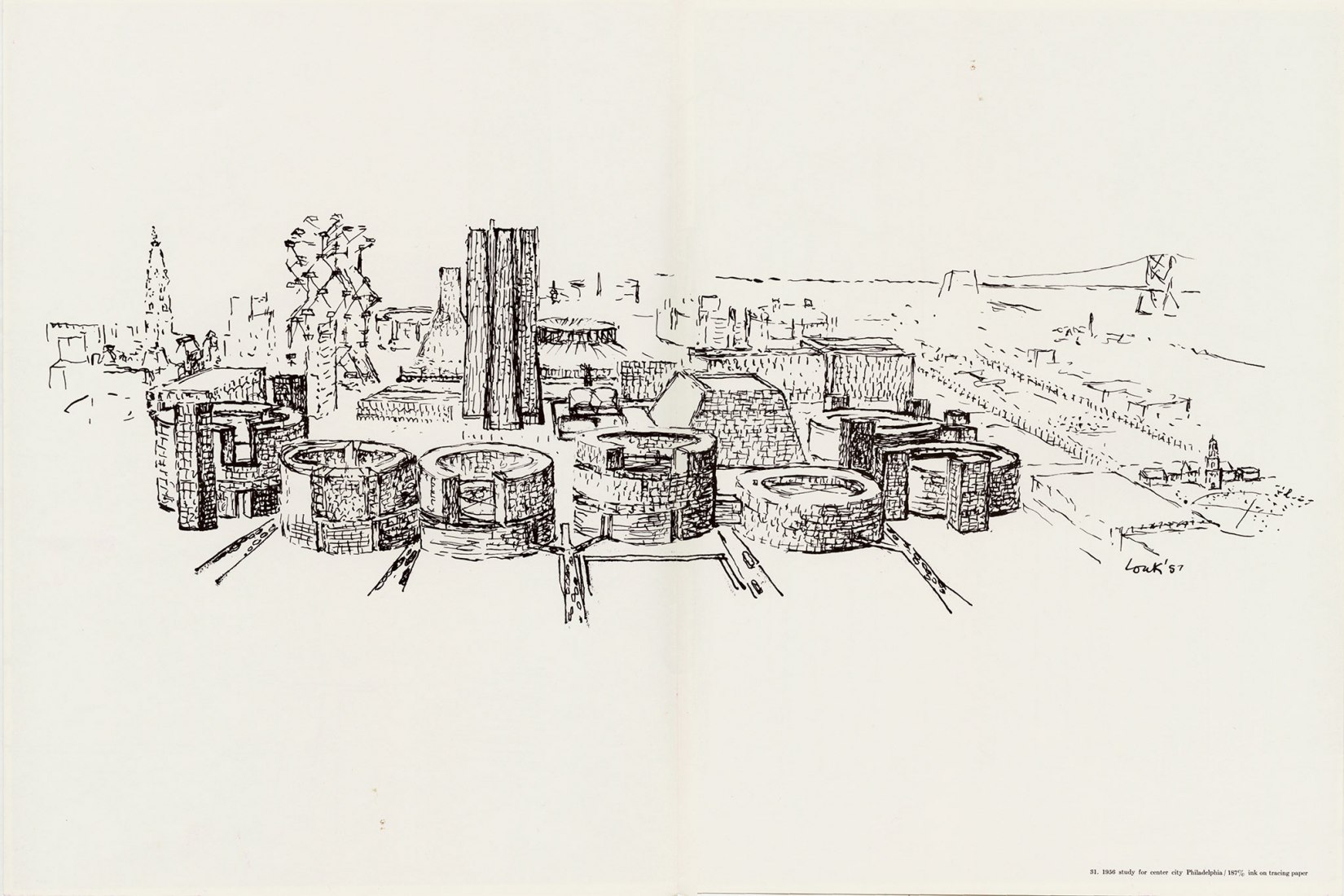The date chosen for this new reissue campaign of Louis I. Kahn's work coincides with his 120th birthday, in February 2021. It also has the approval of the original creators Richard Saul Wurman and the printer Eugene Feldman. The campaign will last for just over a month, with a start date of February 17 and a deadline of March 31, 2021.
Description by Designers & Books
Designers & Books is launching a Kickstarter on February 17 to issue The Notebooks and Drawings of Louis I. Kahn, long out of print, in a new facsimile edition. Created by Richard Saul Wurman, along with printer Eugene Feldman, and first published in 1962 (second edition, 1973). The book features sketches from Kahn's travels and drawings of selected projects, paired with texts from his personal notebooks and unpublished speeches.
This reproduction will be accompanied by an extensive Reader's Guide, which will include new writings by a variety of critics and colleagues as well as personal recollections. Additional visual material will also accompany the work, including many previously unpublished.
The Notebooks and Drawings of Louis I. Kahn was originally conceived by 25-year-old Richard Saul Wurman, who was a former student of Kahn, who employed him in his Philadelphia office. Wurman, who is now a renowned architect, and founder of the TED Conference, selected all of the drawings for the book, with Kahn's consent.
The 2021 Facsimile will be an exact reproduction of the 1973 second edition (originally produced by MIT Press).
Some key specifications of the Facsimilie.-
- 11.25 x 15 inches, vertical.
- 96 pages, including four three-page gatefolds.
- 76 drawings.
- Two sections.- section 1 is a group of sketches produced (at actual size); section 2 is a group of Kahn’s early sketches and finished renderings of buildings and visions.
- Interspersed throughout with text based largely on transcriptions of unpublished speeches given between 1960 and 1962. Also includes selections from Kahn’s Voice of America broadcast, his Universal Atlas Cement Company folder, the Museum of Modern Art booklet on the Richards Medical Research Building, and an introduction written for the book.
- Bound in linen-covered boards, front cover stamped in gold foil with a detail of stylized trees from a Kahn sketch.
Key specifications of the Reader's Guide.-
- 11.25 x 15 inches, vertical.
- Approximately 120 pages.
- New writings from Richard Saul Wurman; William Whitaker; Louis Kahn’s three children—Nathaniel Kahn, Sue Ann Kahn, and Alexandra Tyng; Jonathan Salk; and Paul Goldberger, among others. Also includes tributes from architects who have been winners of the Louis I. Kahn Award: David Adjaye, Tadao Ando, David Chipperfield, Peter Eisenman, Ted Flato, Norman Foster; Jeanne Gang, Frank Gehry, Nicholas Grimshaw, Steven Holl, Daniel Libeskind, Thom Mayne, Moshe Safdie, Denise Scott Brown, Robert A.M. Stern, Billie Tsien and Tod Williams, and Rafael Viñoly.
- Numerous images and additional archival material from the Louis I. Kahn Collection at the Architectural Archives of the University of Pennsylvania.
- Trade paperback with matte black covers, front cover stamped in silver foil with a detail of stylized trees from a Kahn sketch.
- The Kickstarter for the Facsimile and Reader’s Guide is being launched to celebrate Louis Kahn’s 120th birthday in February 2021. The two books are produced with the approval and cooperation of Richard Saul Wurman, Nathaniel Kahn, and the Louis I. Kahn Collection at the Architectural Archives of the University of Pennsylvania. The Kickstarter campaign will run from February 17 through March 31, 2021.





























